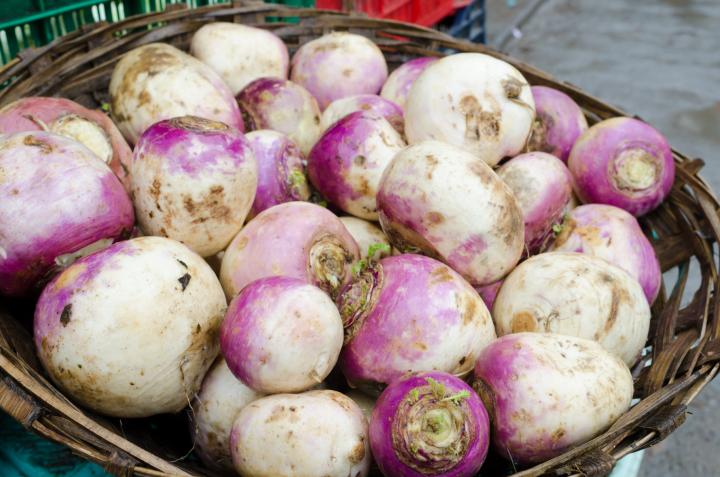






Turnips are a delicious root vegetable that you can grow in your own backyard.
CrestockTurnips are easy to grow when planted in the right season and mature in just two months. They are biennials usually grown as annuals.
Although turnips are more of a staple in European kitchens, many southern gardeners like to grow them for the nutritious turnip greens.
Turnips grow best in a temperate climate but can endure light frost. Fall crops are usually sweeter and more tender than spring crops—and pests are less of a problem.
Turnips have been grown for over 3,000 years, and are especially valuable because all parts of the plants can be eaten (the swollen root and the greens). They are often used as a substitute for potatoes.
Turnips like a dry bed but a wet head.
Young turnips are so tender that you can peel and eat them just as you would an apple.
Turnips are often confused with rutabagas because they are similar, and people like to plant them together. The two root vegetables grow well under the same conditions, but rutabagas take four weeks longer to mature.
Many turnips are grown not for the root itself but for the turnip greens, which can be cooked or used in salads.
For other greens to use in your cuisine, see the Leafy Greens: Health Benefits page.
If you’re wondering how to cook turnips, you’re not alone. Both the turnip roots and greens are very nutritious. Turnip roots should generally be peeled and sliced before using them. Both turnip roots and turnip greens are often cooked.
Copyright © www.100flowers.win Botanic Garden All Rights Reserved